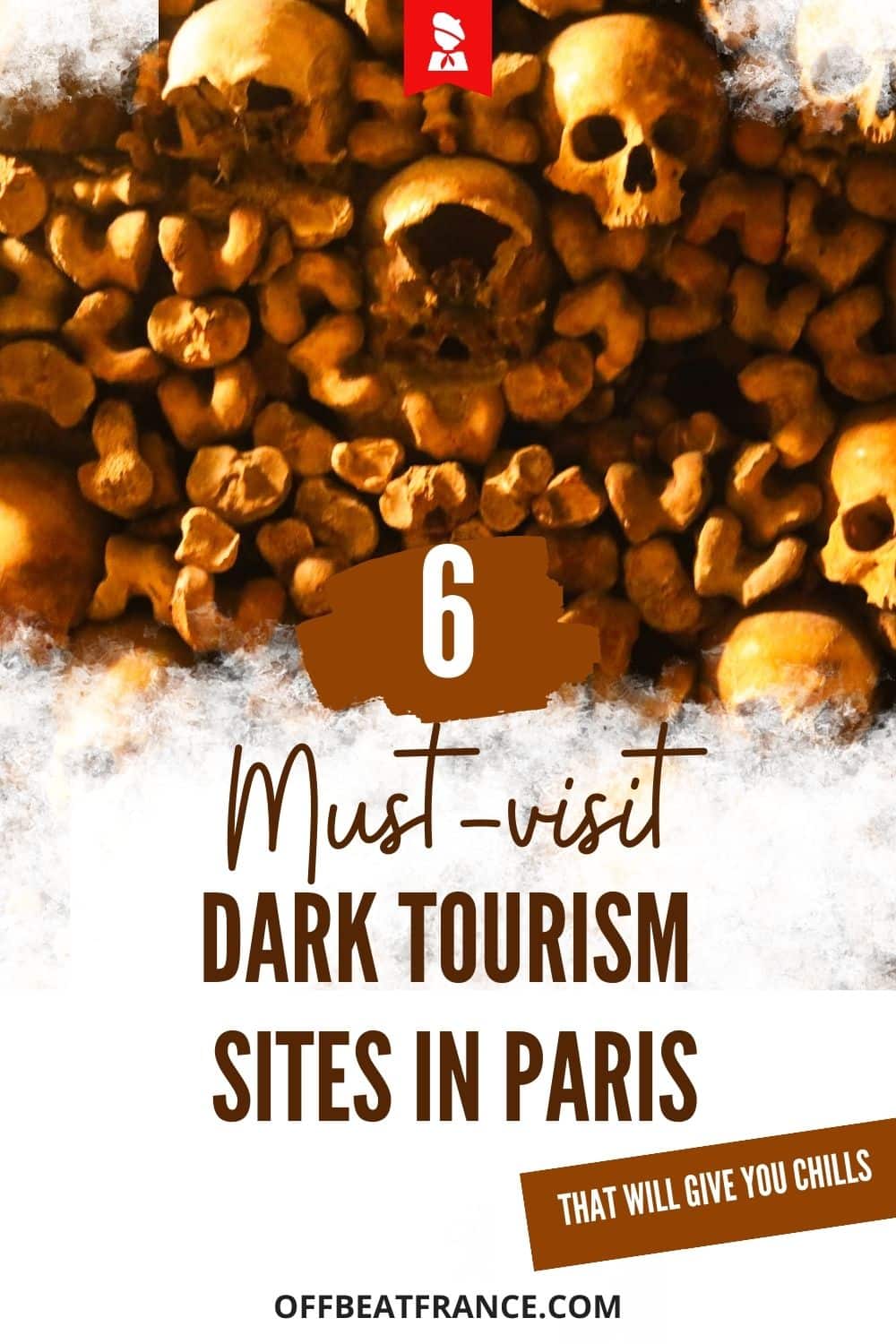Unsure about your French table manners? Click Here to download > > How to avoid these 10 food etiquette mistakes !
- Home ›
- Destinations ›
- Paris ›
- Dark Tourism in Paris
Dark Tourism In Paris: 6 Sites That May Unnerve you
Published 28 November 2023 by Leyla Alyanak — Parisian by birth, Lyonnaise by adoption, historian by passion
Paris, the "City of Light", is an old city and has a darker side, not surprising given the millions who have died here since it was founded more than 2000 years ago. But where I expected these 6 sites to be macabre, I found history, and plenty of reasons to return.
The burial places of Paris and its many sites linked to death or darkness are major tourist attractions: fascination with death nothing new.
It has existed as long as we have, with documented burial practices dating back at least 100,000 years (some put that figure at 200,000*).
In Roman times, crowds gathered to watch gladiators die, and in medieval times, hangings and beheadings were major entertainment events. In the Victorian era, visiting morgues was a "thing".
Today, the city's top three burial grounds – Père-Lachaise Cemetery, Montmartre Cemetery and Montparnasse Cemetery – receive four million visitors a year, and we won't even count all the other graveyards in Paris.
To confirm our appetite for this type of dark tourism, just take a look at the lines that snake outside the Paris Catacombs every day, packed with people waiting to take special tours that guarantee you won't miss a thing. Or the popularity of the most haunted places in Paris and the proliferation of increasingly trendy Paris ghost tours.
SUMMARY
We'll take a brief look at 6 intriguing dark tourism sites I recently visited in Paris: the Saint-Denis Basilica, the Pantheon, Les Invalides, Père-Lachaise Cemetery, the Catacombs, and the Congiergerie, along with the history behind them.
NOTE: Pages on this site may contain affiliate links, which support this site. See full Privacy Policy here.
1. Basilique Saint-Denis
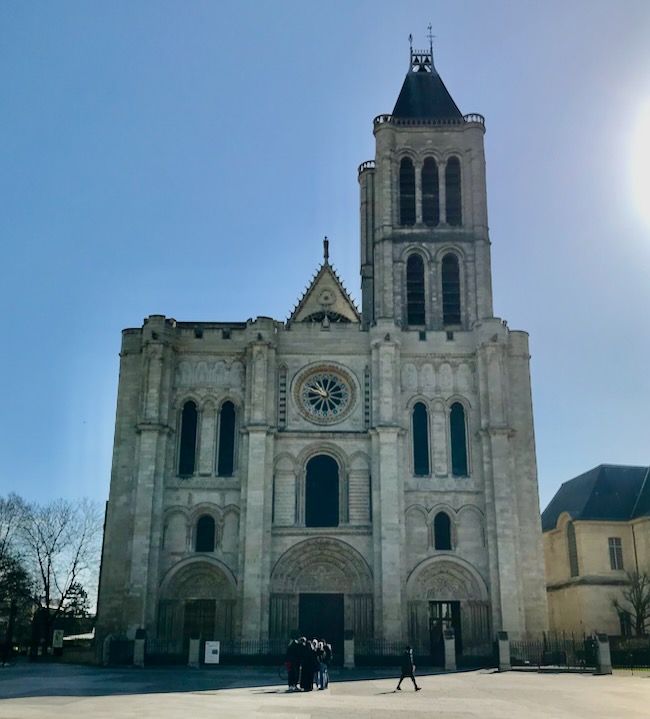
Paying a visit to Saint-Denis is tantamount to walking down a timeline of the history of France, which is why it's my first pick.
Located in the Parisian suburb of Saint-Denis, the basilica is an odd structure with a single tower that gives it an unfinished look.
Inside, however, are the graves and crypts of 43 kings, 32 queens, 63 princes and princesses, and 10 loyal servants of the monarchy, some lesser known, others as familiar as a regular dinner guest.
Among the best known are François I (Francis I), the Renaissance king who made French the national language, and the tombs of Louis XVI and Marie Antoinette, with their twin white marble sarcophagi.
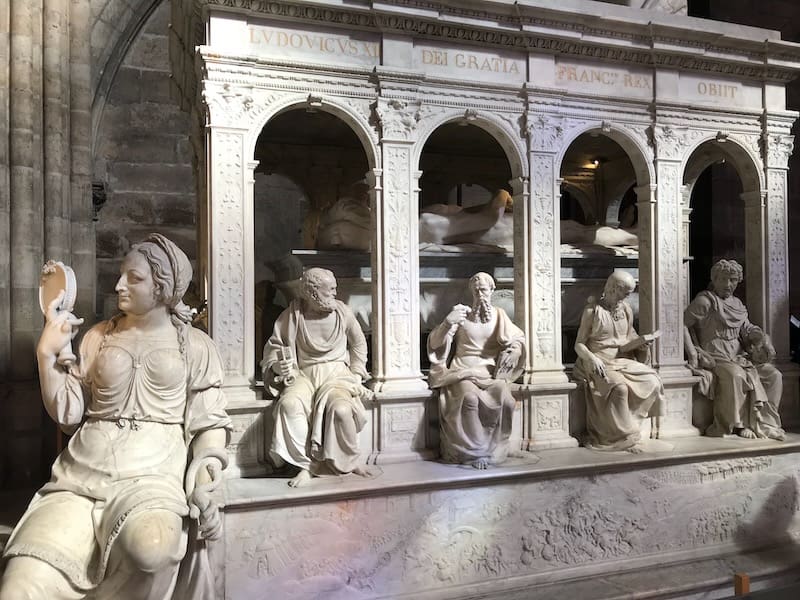
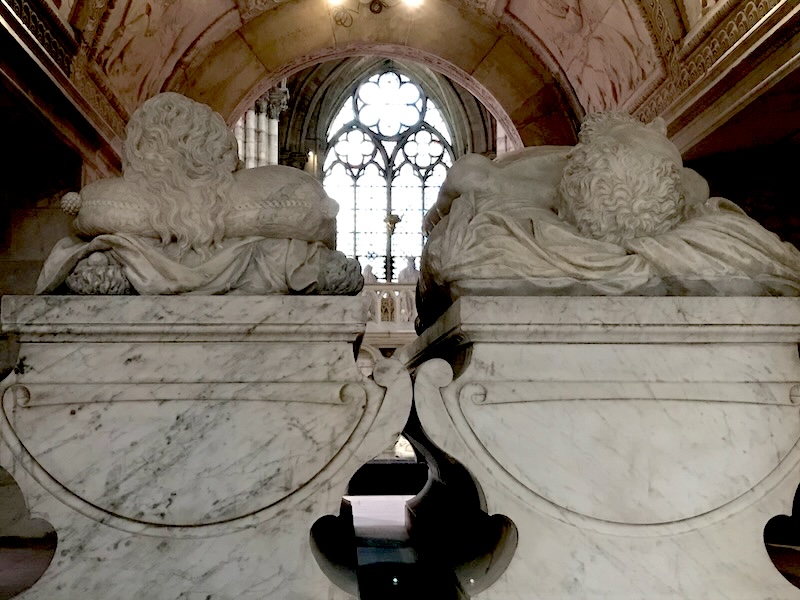
OFFBEAT FACTS ABOUT SAINT DENIS BASILICA
- Saint-Denis, first bishop of Paris, had been sent by the Roman pope to Christianize Paris when he was arrested and killed - beheaded, actually. According to legend, he picked up his severed head and tucked it under his arm, walking 6 kilometers (3.7 miles) until he reached the site of today's basilica, which was built to honor him.
- The first king to be buried here was Dagobert, in 639 CE.
- This "cemetery of kings" has Europe's largest collection of funeral sculptures.
- During the Revolution, the basilica's lead roof was removed and melted for bullets, along with metal plaques and tombs.
- The basilica only has one spire – the original second one (North Tower) was weakened by a tornado in 1846 and dismantled. Politics got in the way of its rebuilding... but now, the second spire is being reassembled.
And to think the basilica almost disappeared...
As the 16th-century Wars of Religion pitted Catholics against Huguenots (Protestants), tombs were pillaged, but the worst plunder and vandalism would take place during the tumultuous years of the French Revolution, when not only tombs but statuary and even the basilica's roof and stained glass windows were severely damaged.
Parts of the basilica are still being restored today, with unattended tombs scattered in corners, or simple plaques denoting a burial place. What has been restored is superb, however, and I spent several hours in the company of France's departed royal souls.
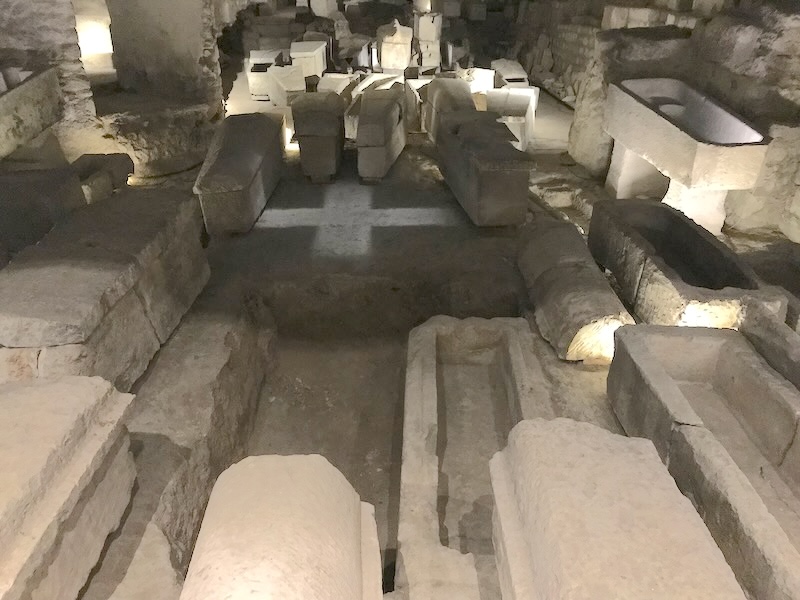
- Getting to Saint-Denis: Metro Line 13, Basilique de Saint-Denis
- Official website: Saint-Denis Basilica
- The Paris Museum Pass includes entrance to the Basilica
FRENCH ATTITUDES TOWARDS DEATH
A recent (November 2023) poll about attitudes towards death (source) updates us on the latest thinking:
- Nearly a third of us believe in life after death - 31%, down from 37% in 1970
- 33% didn't know whether there would be an afterlife, up from 16%
- 32% believe in reincarnation, up 10% from 2004
- half would opt for cremation, compared with 20% in 1979
A whopping 9 in 10 French visit a cemetery at least once a year, often on 1 November, the day of Toussaint, All Saints' Day: in 2022, we spent €167 million (USD 177 million) on flowers for that day.
2. Les Invalides
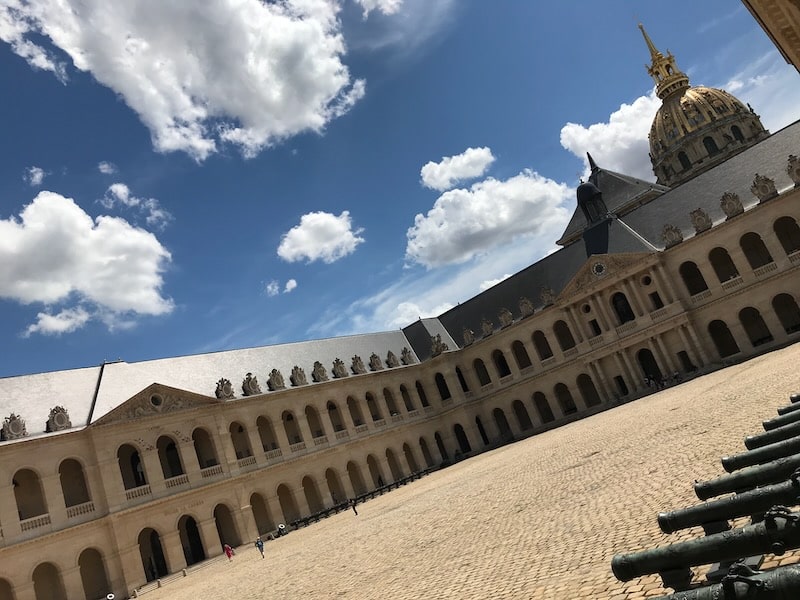
That Napoleon Bonaparte was an intellectual and strategic giant is not in dispute. Nor are his grandiosity and megalomania, so he would have undoubtedly been proud of his final resting place.
Among the grand monuments of Paris, few landmarks are as storied as Les Invalides. Built between 1671-1706 by Louis XIV, the complex originally served as a hospital and retirement home for wounded soldiers. Today it houses several of France's most important military and historical museums, and is still a functioning military hospital.
However important its various functions, most people come here to see one thing: Napoleon's tomb.
It is a substantial structure, five separate coffins (this was customary at the time) – iron, mahogany, two lead coffins, and ebony – encased in a giant sarcophagus made of red quartzite that sits on a green granite pedestal, all of it surrounded by 12 white marble victories. Whew.
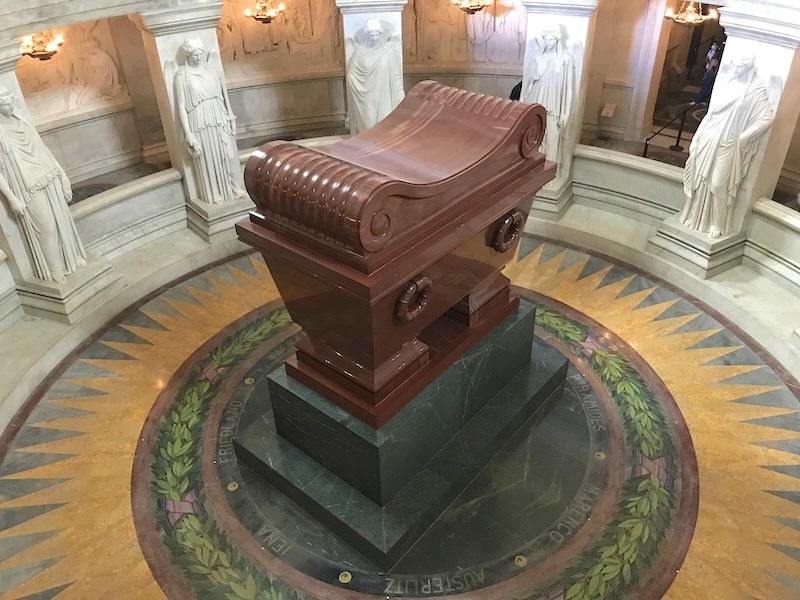
You could spend an hour just observing this one tomb, located beneath the iconic domed church designed by Jules Hardouin-Mansart, favorite Louis XIV and architect of the Place Vendôme and of the Grand Trianon at Versailles.
Others are buried here as well, including several of Napoleon's brothers, his son (who died aged 21), a number of Marshals of France, and to me, the most illustrious of them all (or part of him, at least): Sébastien Le Prestre, marquis de Vauban, Louis XIV's military architect, a genius and humanist who built a ring of fortresses around France, protecting the country from invasion. Twelve of his fortresses are protected on the UNESCO World Heritage list.
OFFBEAT FACTS ABOUT THE INVALIDES
- Revolutionaries invaded the Invalides and gathered weapons before storming the Bastille prison.
- In 1800, Napoleon had the tomb of the Marechal de Turenne (Louis XIV's war minister) in the Invalides, turning it into a military necropolis.
- Its chapel, the Eglise du Dôme, was the highest structure in Paris until the Eiffel Tower was built.
- Napoleon actually never requested burial here - he merely wanted to be buried along the Seine. The Invalides being along the Seine, however...
- It took nearly 20 years after the emperor's death on the island of Saint-Helena for the French and British to agree his repatriation to France.
- For the bicentennial of his death in 2021, a strange skeleton hung over Napoleon's tomb. It was a facsimile of his favorite horse, Marengo, and caused no end of controversy.
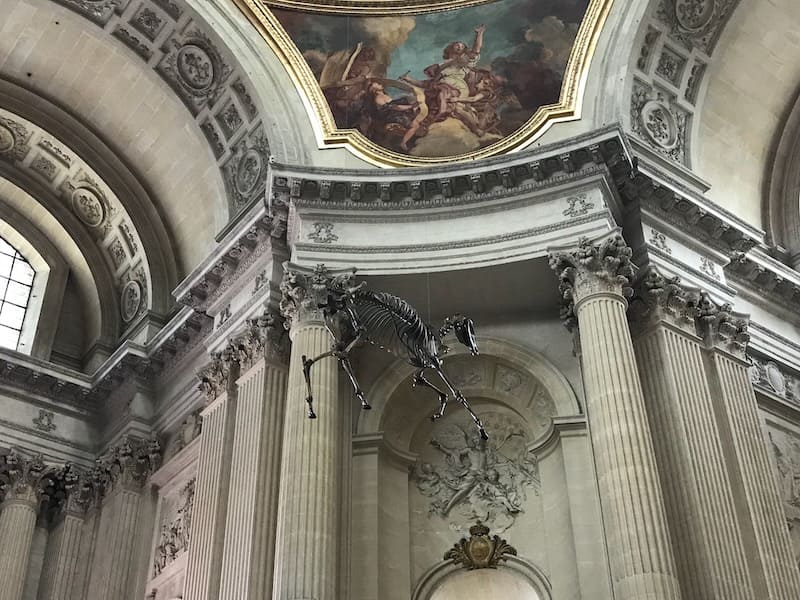
The Franco-Italian architect Louis Visconti was tasked with designing Napoleon's tomb, and its ingenious design allows visitors to look down upon the tomb without actually having to descent into the crypt.
Having satisfied my Napoleonic curiosity, I was nonetheless in Les Invalides for hours, far longer than I'd planned − each time I walked out a door, an arcade would lead me to yet another museum:
- the Musée de l'Armée, or Army Museum, which tackles military history in France with a collection of weaponry right up to World War II (and is one of the world's largest military museums)
- the Musée des Plans-Reliefs, filled with scale models of fortified towns designed by Vauban, the great military engineer under Louis XIV
- the Historial Charles de Gaulle
- the Musée de l'Ordre de la Libération, all about the Résistance
- the Musée des Épées, or swords.
The setting is as regal as it is military, a fitting eulogy for an emperor who at some point reigned over most of Europe.
- Getting to Les Invalides: Metro Lines 8 & 13, Invalides
- Official website: Hotel des Invalides
- Get your Invalides ticket with the Paris Museum Pass
- Or buy your skip-the-line ticket here
3. Paris Pantheon
This marvelous neoclassical building in the heart of the Latin Quarter was supposed to be a church, designed to provide a resting place for the relics of St. Genevieve, protectress and eventually patron saint of Paris.
Built between 1764-1790, the church was commissioned by Louis XV but the French Revolution broke out just as it was completed. Goodbye religious building, hello classical temple, renamed Panthéon, like the one in Rome.
French history being what is is, the building would revert to its religious purpose under Louis-Philippe, France’s last king before a second Napoleonic empire, but that religious vocation, too, would be short-lived.
In 1885, it became a secular mausoleum once and for all when author Victor Hugo, a national hero in France, was buried here.
It is a work of art, from the incredible engineering of its huge domed interior to the giant masterworks adorning its walls to the sculptures designed to fill the spaces in-between.
But all this art fails to reduce the sense of the infinite projected by this space – stepping inside for the first time, I felt quite small.
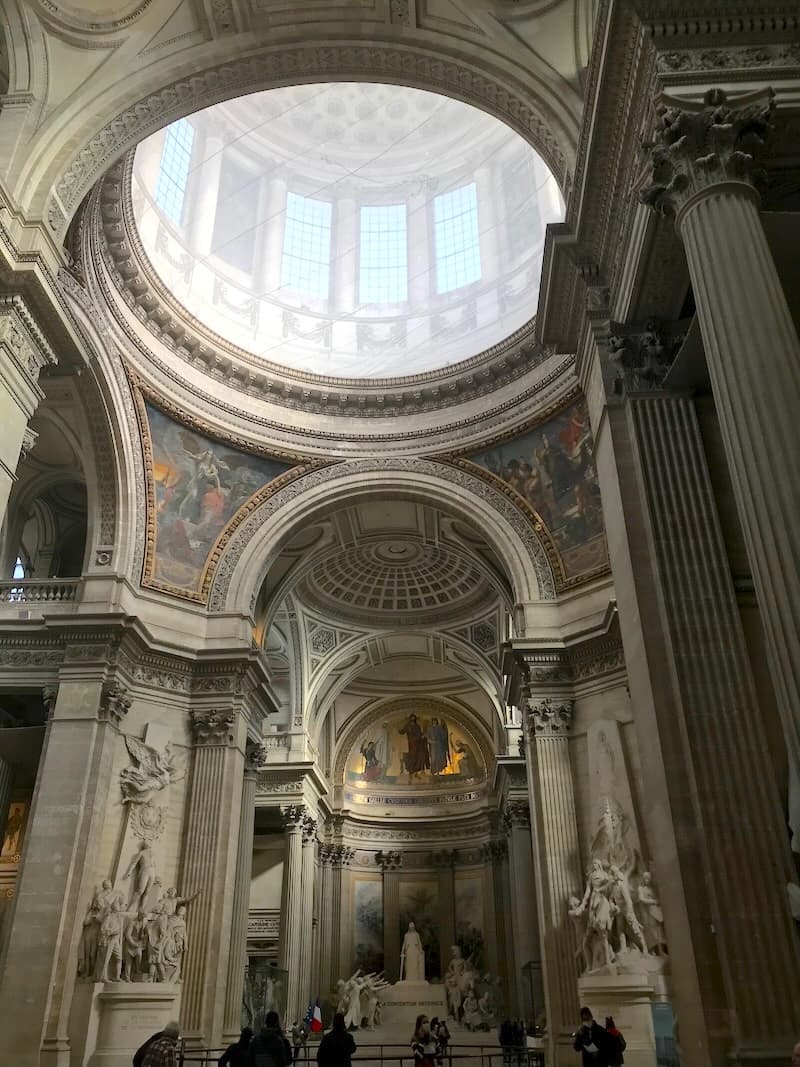
The architect, Jacques-Germain Soufflot, was a lover of Greco-Roman architecture, a fact you can't miss – this monumental building seems to have stepped straight out of Antiquity.
I somehow missed it at the time, but the upper floors apparently provide a panoramic view over Paris rooftops. Shame, next time I visit.
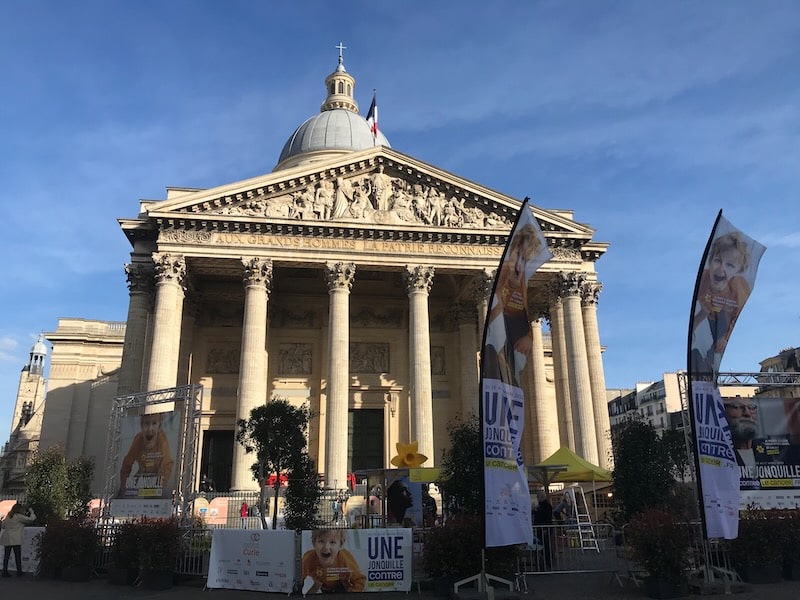
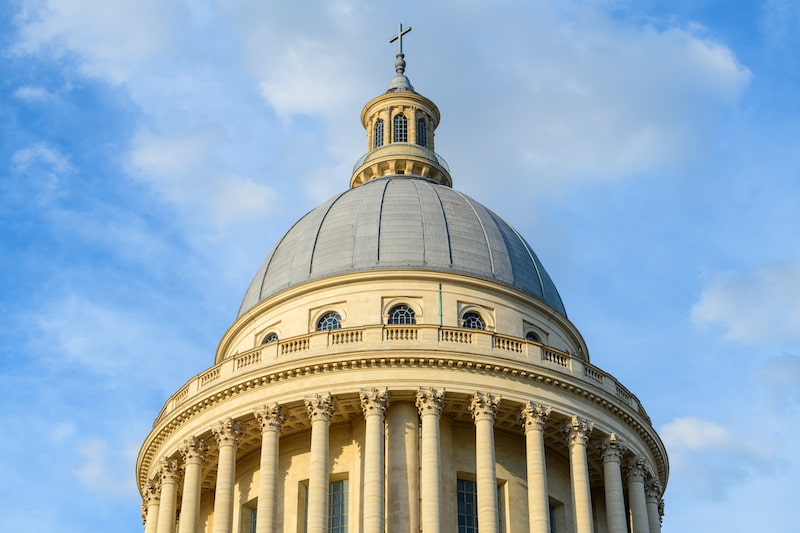
Many people come here to see Foucault’s Pendulum, which proves the Earth rotates. Another travel fail, since it was off on maintenance when I visited.
But the real draw lies below, in the crypt, the resting place of many of France's most celebrated (site in French) writers, scientists, and philosophers. They include Victor Hugo, of course, but also Voltaire, Rousseau, Émile Zola, Pierre and Marie Curie, or Louis Braille. Two major novelists, Alexandre Dumas and André Malraux are buried in the gardens outside.
The most publicised recent Pantheon entry, if you've been following the news in France, was Josephine Baker, the first American and Black woman to be honored with a place here.
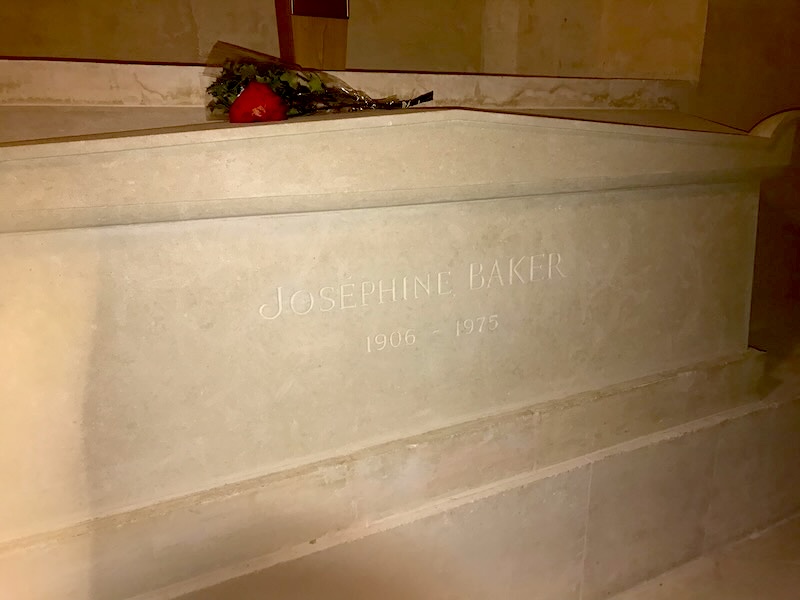
What I took away, apart from the visual impact, was a strong sense of history and of the importance of individual contributions to that history.
- Getting to the Pantheon: Metro Line 10, Maubert-Mutualité or Cardinal Lemoine
- Official website: Pantheon
- Get your Paris Museum Pass, which includes Les Invalides
With an "intra muros", or "inside the walls" population in Paris of 2.2 million, those who die have to go somewhere. Mostly, they go to one of the city's 14 cemeteries, or to one of the 6 that lie just outside the city walls, in the Greater Paris area.
Paris has been Paris for centuries, with millions of births and deaths, all within a relatively small area. In the year 1000, about 120ha of Paris was built up. By 1850, 3370ha were inhabited and today, a whopping 10,500ha are urbanized (source).
4. Père Lachaise Cemetery
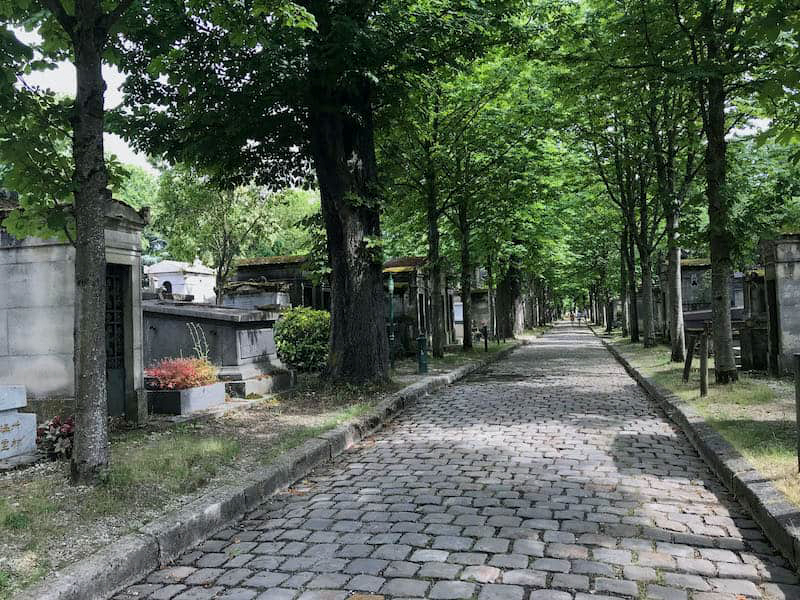
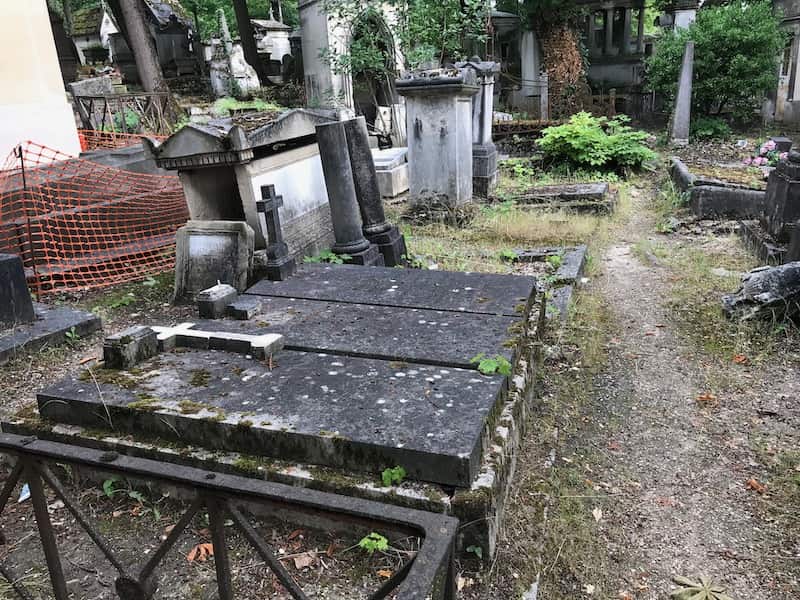
I don't usually walk around cemeteries but I have always been drawn to the Père-Lachaise, whether for its famous graves or the stories behind them, but what I did not expect was the feeling of calm and serenity that pervaded its 110 acres in eastern Paris.
Established by Napoleon in 1804, this necropolis holds the remains of over one million individuals, many of them among the most illustrious names in French history. It also happens to be one of the most visited landmarks in Paris.
Walk through Père Lachaise for a who's who of celebrities, artists, and literary giants: Oscar Wilde, Edith Piaf, Marcel Proust, Jim Morrison, Maria Callas, Gertrude Stein, Baron Haussmann, Colette, Molière, Balzac, and Chopin. The tombs of Isadora Duncan, Alice B. Toklas, Yves Montand, Eugène Delacroix, and Sarah Bernhardt can also be found here.
If you happen to be visiting Paris in late October, you might also enjoy learning how Halloween is celebrated in France.
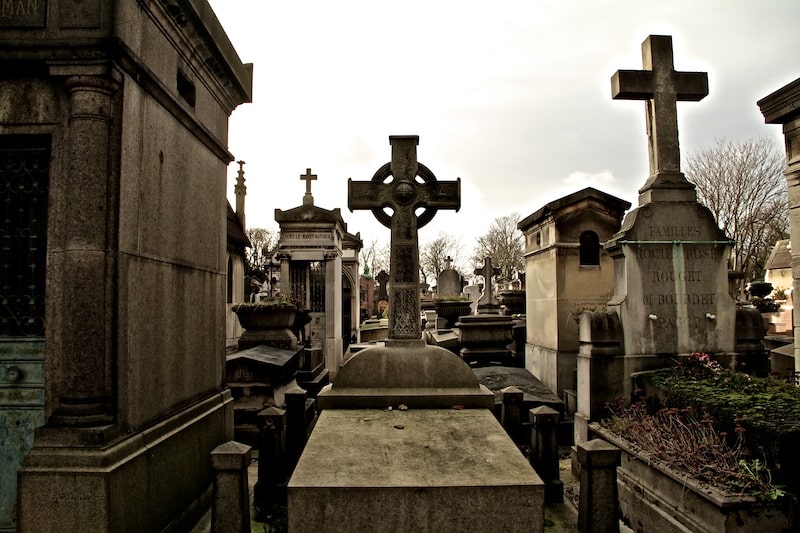
Being a cemetery, the Père Lachaise has its share of spooky myths and legends over the years. Many believe the grave of occultist Héléna Blavatsky is haunted; that the tomb of Victor Noir, a 19th-century French journalist, is said to bring good luck (and fertility!) to women who kiss it; that the White Lady, wealthy Baroness Stroganoff, promised her entire fortune to the first person to spend an entire year inside her mausoleum, next to her body; and of course, that Jim Morrison of The Doors still lives and manifests as a ghost...
The cemetery saw violence during the Paris Commune when 147 Communards were lined up and shot on the grounds in 1871. Their fallen bodies were later cremated on site and buried in a mass grave that still stands today as a memorial, as do memorials to other groups of soldiers, from Canadians to Poles.
Napoleon would have been surprised at the cemetery's contemporary popularity. When it opened, it wasn't much liked for burials due to its distance from the city center, not until a clever marketing campaign transferred the remains of famous individuals like Molière and La Fontaine here. That quickly changed public opinion.
- Getting to Père-Lachaise: Metro Line 2 Alexandre Dumas or Lines 2 or 3 Père Lachaise
- Official website: Père-Lachaise
5. The Catacombs of Paris
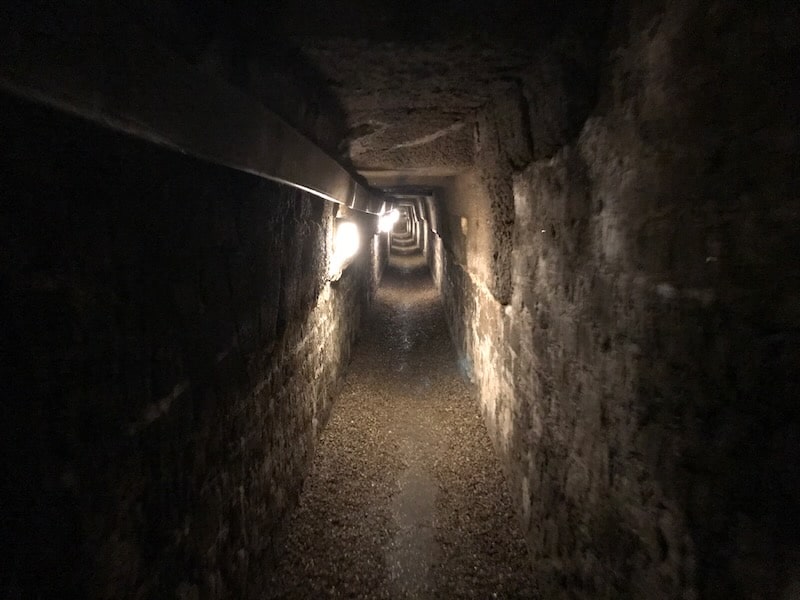
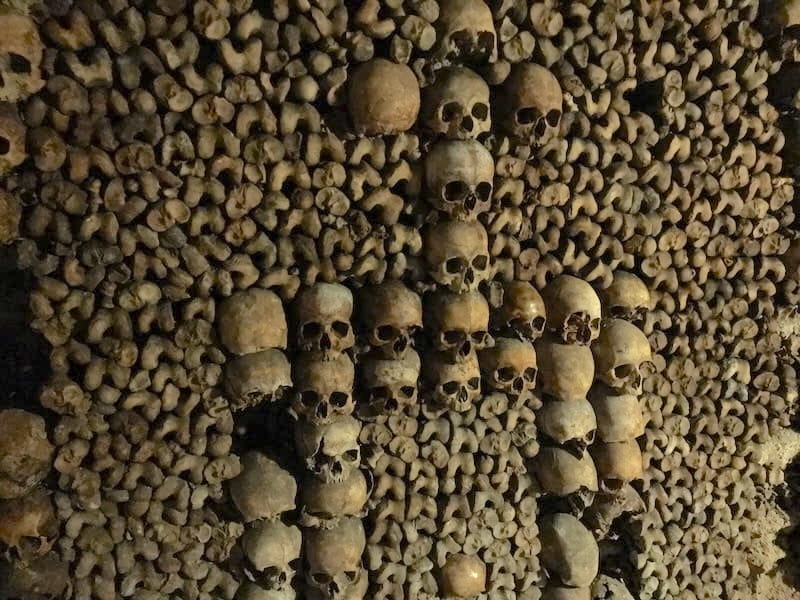
Unlike many other Paris graveyards and crypts, we don't actually know most of the people buried in the Catacombs, one of the city's most haunted places. How could it not be, with its dark, dingy tunnels lined with the bones of over six million Parisians?
By the late 18th century, the traditional cemeteries of Paris were overflowing and causing health hazards, so it was decided to rehouse their human remains in the city's abandoned, Roman-era limestone quarries under the city, turning them into a vast ossuary.
You can only visit the tiniest portion of the Catacombs' 200 miles or so of tunnels, but even that is worth climbing down the twisty stairs into the tunnels.
Here you'll find all manner of bones – a few are stacked haphazardly along the walls, but most are well organized, whether with plaques or signs, or styled into unexpected sculptures. Most of them belong to ordinary Parisians, but there are also plenty of notables buried here, including victims of the guillotine.
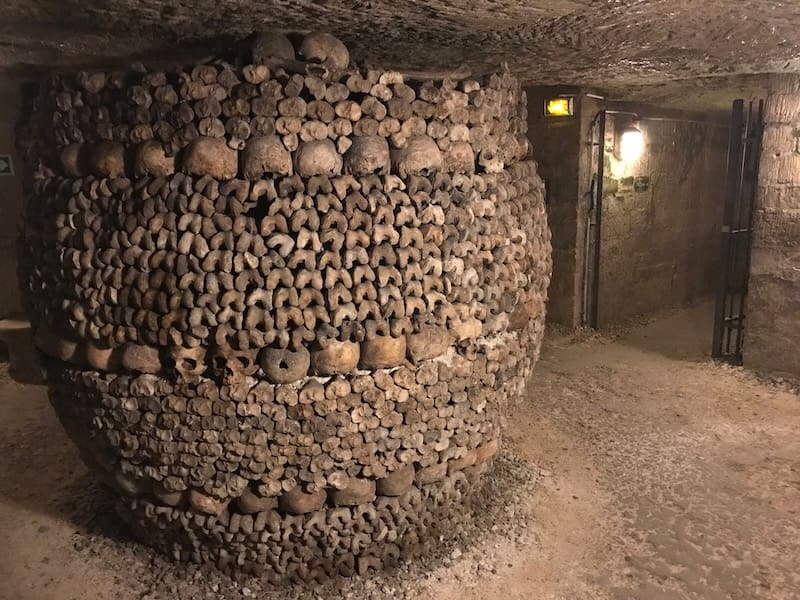
At first you may think all this macabre, but after a while curiosity may take over and you'll be wanting to discover what is around the next bend.
And of course, there be ghosts. Like that of Philibert Aspairt, a hospital concierge who wandered down in 1793 but was only found 11 years later, near an exit. Remember this should you be tempted to wander down unguided (these days this is increasingly difficult as authorities close off entrances as soon as they find them).
This is probably the most eerie sight involving dark tourism in Paris...
- Getting to the Catacombs: Metro Lines 4 & 6 Denfert-Rochereau
- Best tours of the Paris Catacombs
6. The Conciergerie
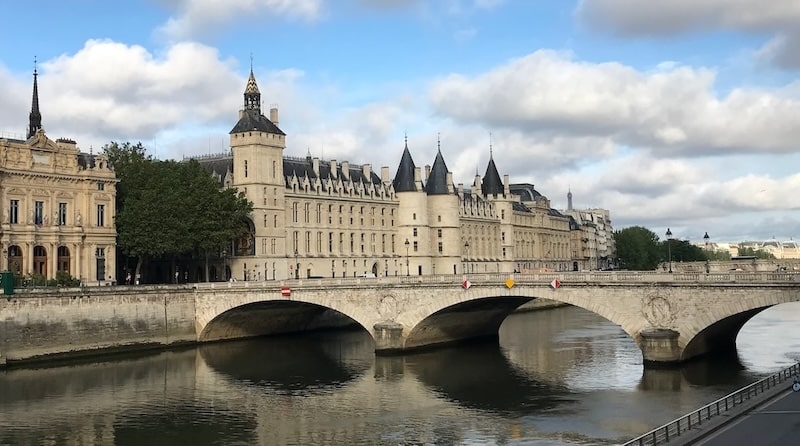
The Conciergerie has such a long history and is connected to major events of French history, especially during the French Revolution.
Originally a Gallo-Roman fortress and home of Frankish kings, it was expanded in the 13th century, becoming a prison in the 14th.
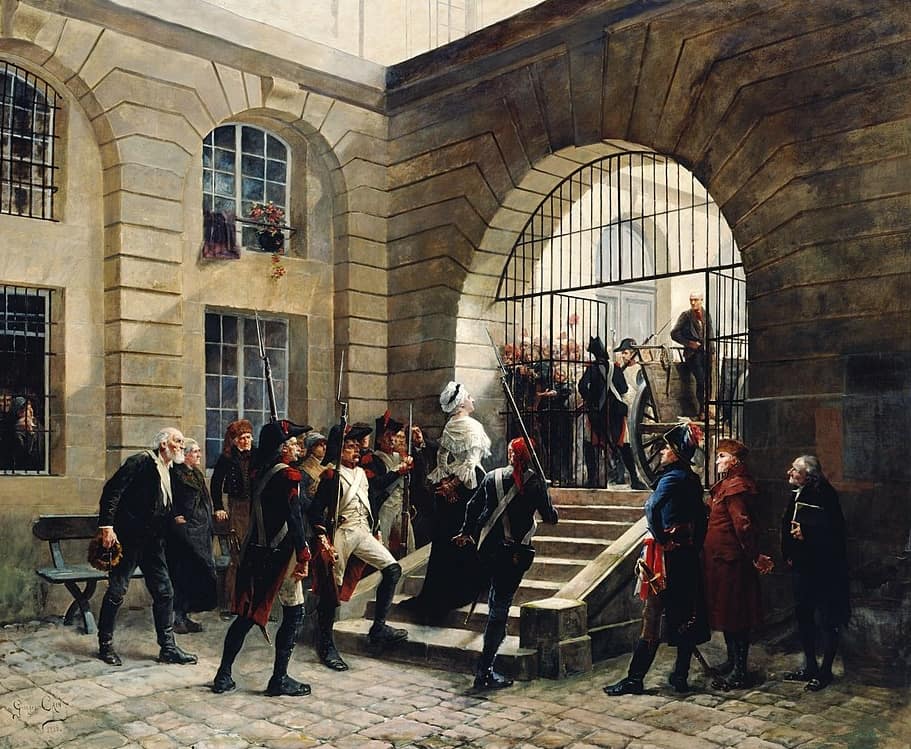 Painted in 1885 by Georges Cain - Marie-Antoinette being led from the Conciergerie to the guillotine on the Place de la Révolution (today's Place de la Concorde)
Painted in 1885 by Georges Cain - Marie-Antoinette being led from the Conciergerie to the guillotine on the Place de la Révolution (today's Place de la Concorde)Marie-Antoinette may have been the Conciergerie's most famous "guest", having spent her final days here before being taken to the guillotine.
But she was by no means the only noteworthy one. Others included:
- Olympe de Gouges, a political activist and author of the Declaration of the Rights of Woman and of the Female Citizen, in which she argued all persons were born equal
- Jean-Paul Marat, a revolutionary journalist, and Charlotte Corday, Marat's assassin
- Madame du Barry, patron of the arts, friend of Voltaire, and official mistress of Louis XV
- and a slew of famous revolutionary figures, both for and against.
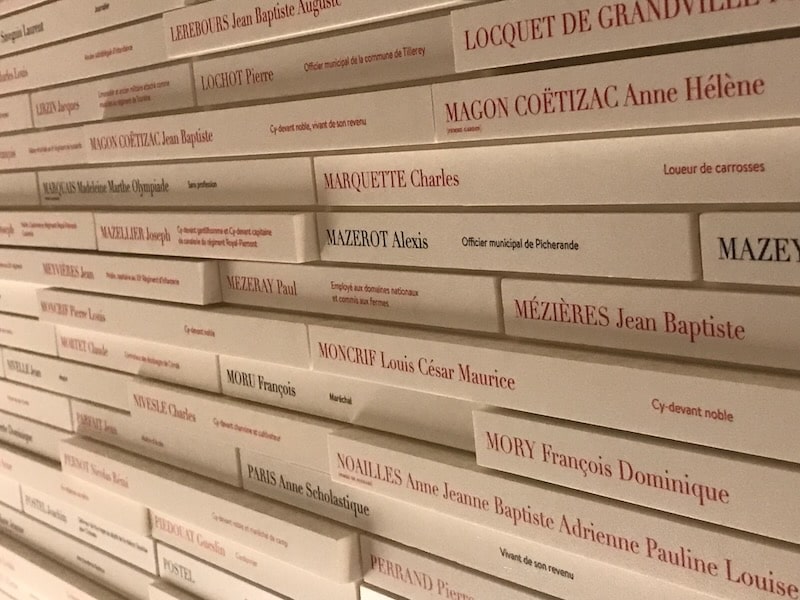
You'll find many of their names in the Salle des Noms, or Room of Names, which lists more than 4000 men and women who were held at the Conciergerie before being heard by the Revolutionary Tribunal, a special court which sat between 1793-1795 to judge those accused of anti-revolutionary or anti-state actions.
The names that cover the walls are divided into the three "estates": the nobility, the clergy, and everyone else. Surprisingly, ordinary citizens made up the vast majority of those tried.
The small name plates are color-coded: red for those who were executed, and black for those who were acquitted, deported or imprisoned.
The plates' thickness denoted their station in life: the thicker ones were of noble birth, the medium ones belonged to the clergy, and the flat bands denoted everyday citizens. Reading their professions brings home their humanity, the everydayness of the "enemies of the Revolution", whose crimes were often having been born in the wrong family.
- Getting to the Conciergerie: Metro Line 4 Cité
- Official website: Conciergerie
- The Paris Museum Pass includes entrance to the Conciergerie
More Paris dark tourism sites
Clearly, Paris isn't lacking a dark side, very much the contrary. If it's chills you want, the city delivers, not only the more
In addition to the more famous sites I described above, there are countless more, like these...
- Musee Fragonard d'Alfort (not the perfume museum, the other one, the veterinary museum)
- Chapelle Expiatoire, in memory of Louis XVI and Marie-Antoinette
- Tomb of the Unknown Soldier, Arc de Triomphe
- Musée des Moulages – Museum of Casts (website in French)
- Musée de la Préfecture de Police – Police Museum (website in French)
- Museum of the History of Medicine (website in French)
- not to mention the many cemeteries, taxidermy shops, underground bunkers... Paris is a real dark tourism treasure trove!
WHAT IS DARK TOURISM, EXACTLY?
There are many definitions and terms. It also goes by the name of grief tourism, or thanatourism (from the word thanatos, the Ancient Greek personification of death), ghost tourism, crime tourism, trauma tourism...
Bottom line, it is tourism in some way related to death, however distantly, or to violence.
Why is dark tourism so popular?
So many reasons compel us: sheer thrills, education and learning, history (and trying not to repeat it), a desire to understand the past, closure or reassurance, empathy, curiosity – and a few darker motives that I trust no one here is partial to!
And for those of you who want numbers to back things up, here are some interesting statistics.
Before you go...
Next on my list to visit is Montparnasse Cemetery, filled with an artistic who's who of Paris – Man Ray, Chagall, Modigliani, Charles Baudelaire, Guy de Maupassant, Samuel Beckett, Jean-Paul Sartre, Simone de Beauvoir, and Serge Gainsbourg are all buried here.
If you're keen to visit more eerie venues, here are some additional haunted sites of Paris.
And if you'd like a few sights that are a bit less lugubrious, have a look at these off-the-beaten-path sites in Paris.
(* Source)
Did you enjoy this article? I'd love if you shared it!
